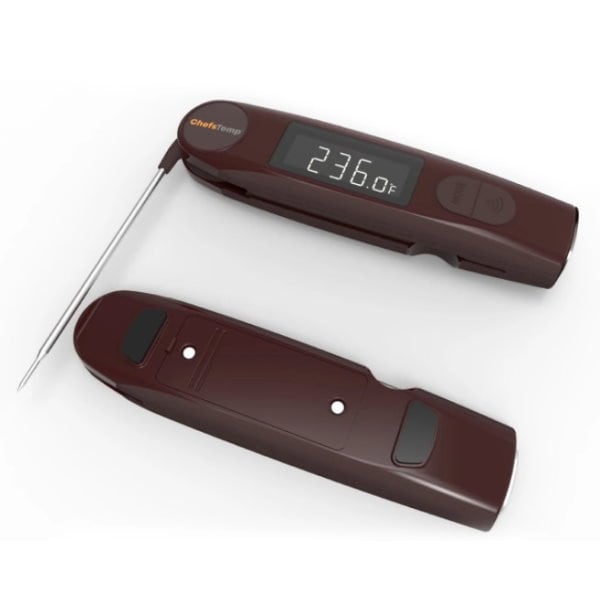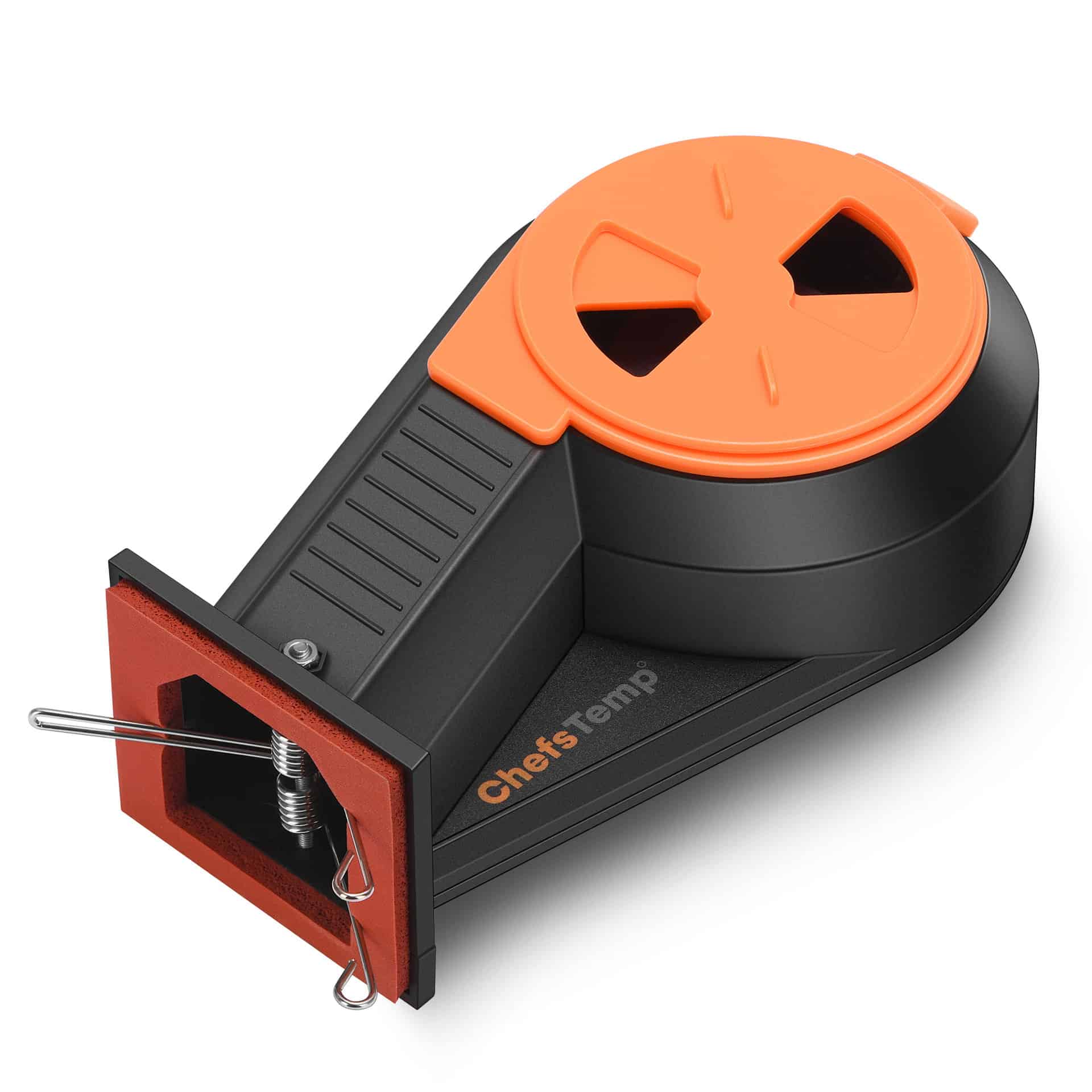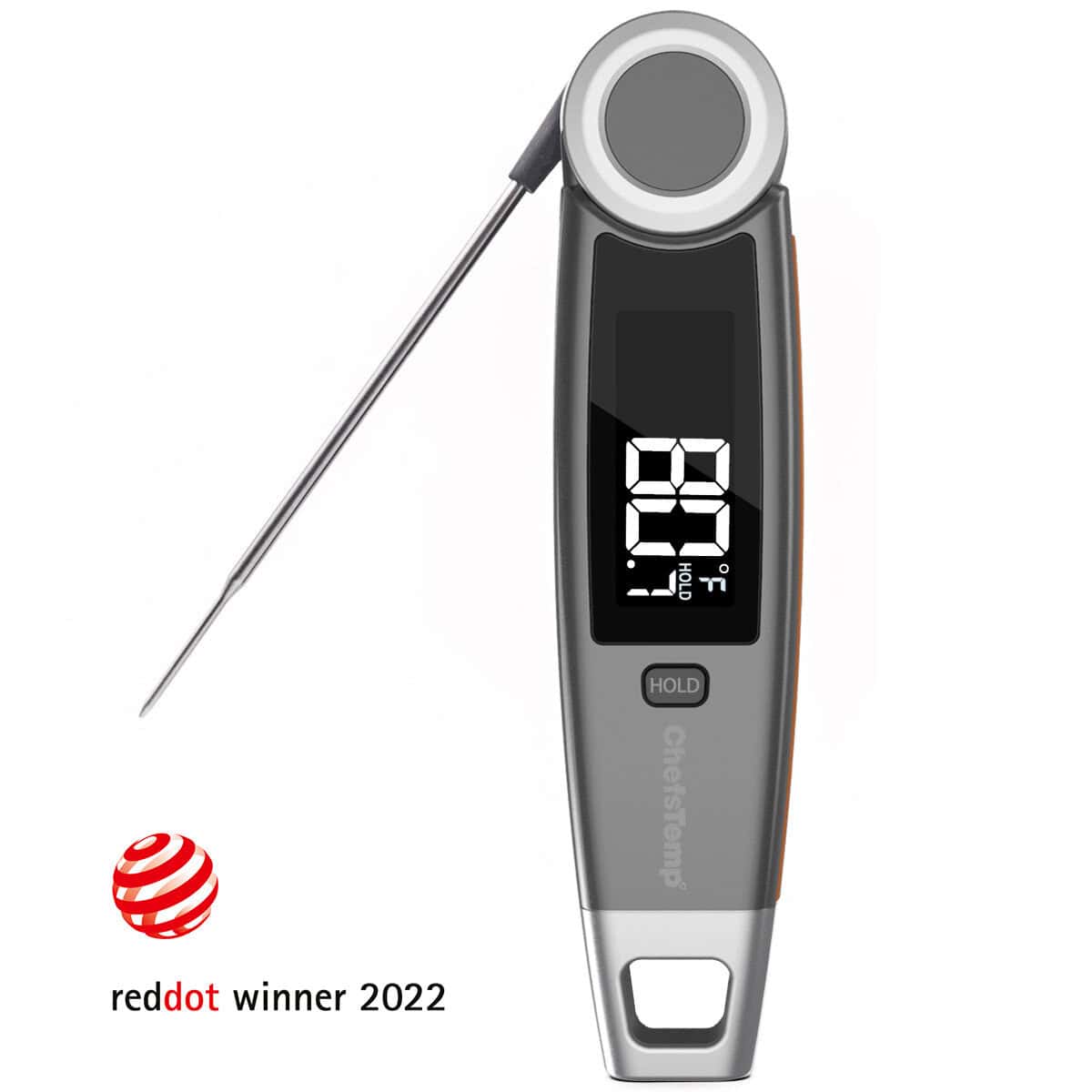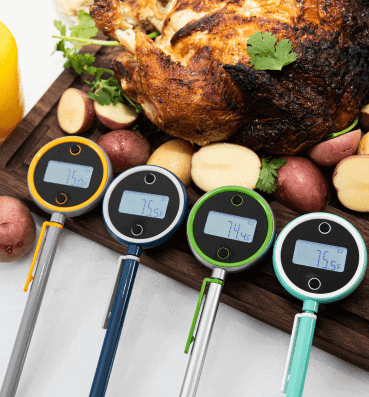
What Kind of Food Thermometer Do You Need – Types of Kitchen Thermometers
If you don’t have a food thermometer in your kitchen, this is a reminder to get yourself one. This is one of the most invaluable tools you can have at home, especially when you do a lot of cooking. Food safety isn’t something that home cooks often think about but it is very important to make sure that your family not only enjoys your food but that you are all safe from any foodborne illnesses.
It’s a good idea to take some time to learn a little more about the different types of thermometers in the kitchen and the purpose for using each.
The Use of Thermometer and Food Safety
 Food safety is paramount when it comes to food preparation and handling. A lot of people think that cooking is only about achieving the desired taste for each type of food. However, the cooking process is also vital to ensure that the food is safe to eat. There are several factors that you must take into account to make sure that is possible. For example, you need to cook certain types of meat within the recommended cooking time to ensure ‘doneness’.
Food safety is paramount when it comes to food preparation and handling. A lot of people think that cooking is only about achieving the desired taste for each type of food. However, the cooking process is also vital to ensure that the food is safe to eat. There are several factors that you must take into account to make sure that is possible. For example, you need to cook certain types of meat within the recommended cooking time to ensure ‘doneness’.
But there are also other factors to consider, such as the taste and texture of the meat. Cooking meat for too long can compromise quality and taste. Hence, food thermometers were developed to allow you to check the internal temperature of the food before serving it.
You can’t tell if meat is cooked by looking alone! You have to use a thermometer to accurately tell the temperature. Plus, there are various guidelines on food safety as to the minimum internal temperature for certain types of meat that you need to observe. A food thermometer is your best assurance that you’ve reached those minimum guidelines and if the meat is safe to consume.
Different Types of Thermometers
Checking for ‘doneness’ of the meat you are cooking is only possible with the use of the right thermometer. It’s hard to judge if meat is done based on how it looks on the exterior as the internal temperature might not be right yet. The only way to tell for sure is with a thermometer that can probe into the center of the meat.
To help make your cooking more efficient, you’ll need to keep a food thermometer handy at all times. This guide will walk you through the different types of thermometers and the uses for each.
1. Digital Thermometer
 Also known as an instant read thermometer, this is one of the best tools you can have in the kitchen to do a quick check on the temperature reading of the meat. True to its name, it provides you instant reading on the temperature of your food, in as little as 10 seconds.
Also known as an instant read thermometer, this is one of the best tools you can have in the kitchen to do a quick check on the temperature reading of the meat. True to its name, it provides you instant reading on the temperature of your food, in as little as 10 seconds.
For this thermometer to work, you must probe it at least half an inch deep into the meat. It has the ability to measure the temperature of both thin and thick foods (such as thick cuts of meat). It comes with a probe that has a built-in sensor at the tip responsible for performing the temperature reading.
Use a digital thermometer to check the temperature of the food when it is near the end of its cooking time. Depending on the model, these thermometers can be calibrated to ensure the accuracy of temperature reading.
The only downside to a digital thermometer is that you cannot leave it in the food while it’s cooking.
2. Oven-Safe Thermometer
This type of thermometer is recommended for monitoring the temperature of the food while it’s cooking. As the name implies, it is safe to insert into the food while it’s cooking so you can monitor the temperature in real-time.
It can provide a temperature reading in 1 to 2 minutes. Make sure you insert this thermometer deep into the food – about 2 to 2 ½ inches deep. You can also use this thermometer for other types of food such as soups and casseroles, not just meat.
The only downside to the oven-safe thermometer is that it can’t be used on thin foods. Also, the metal parts can conduct heat so there is a tendency for it to produce false high readings.
3. Deep Fry Thermometer
This is a specialized type of food thermometer that is intended for deep frying. This is also known as a candy thermometer since it is used by bakers and other cooks that prepare sugar solutions such as caramel, syrup, chocolate, jam, and more.
This type of thermometer is capable of reading extremely high temperatures when cooking (up to 200 degrees C). To use this thermometer, simply hang it onto the side of the deep fryer. It has an affixed hook so it can remain steady while the cooking process is ongoing. You can tell the temperature based on what is indicated on the dial.
There are other types of thermometers on the market such as the double-pronged fork digital thermometer (for grilling meat), oven cord thermometer (for baking food), and thermocouple thermometer (for fast reading in 2-5 seconds).
How to Use a Food Thermometer
Aside from using the right food thermometer for the right cooking process, it is also important that you know how to properly use a thermometer. This will ensure maximum accuracy of the temperature reading so you can get the best results when cooking any type of food.
For instant-read or digital thermometers, you must insert them into the food a few minutes before the end of the cooking time. This will enable you to tell if your food is done or if it needs a few more minutes.
For most types of thermometers, you have to insert the probe into the thickest part of the meat. It should not be inserted into a bone or fat as it can affect your reading. For irregular shaped foods, make sure to check in several places.
It is also a good habit to clean the stem and probe of your thermometer before and after each use. This is an important step to promote food safety and to avoid cross-contamination. Use soapy water to clean these parts but do not immerse it in water.
Finally, it is important to follow the instructions on the proper use of each type of thermometer.
Discover Other ChefsTemp Products
Discover more recipes and learn kitchen tricks by joining our cooking family on Facebook.
You may also like:


















